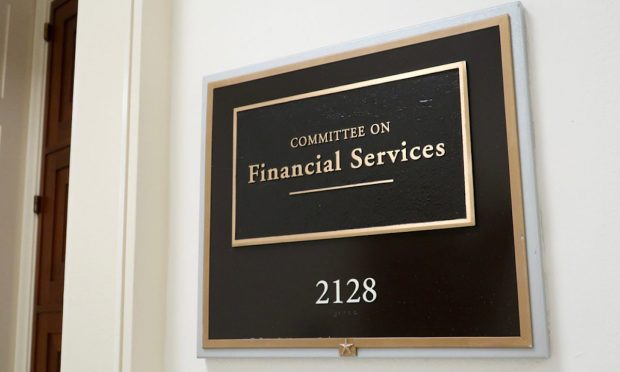Scenes From the Five-Hour Congressional Hearing on Crypto

When the House Financial Services Committee asked six top crypto executives to discuss the risks and benefits that cryptocurrencies bring, they likely didn’t expect the five-hour marathon session that transpired.
The usual themes like the regulation of crypto and its use by criminals came up over and over. However, in the over-long Q&A, a couple of topics got some interesting responses. Here’s a look at three of them: whether stablecoins are a threat to the U.S. financial system, how Web3 can fight Big Tech and the advantages that crypto’s inclusion can bring.
The hearing, “Digital Assets and the Future of Finance: Understanding the Challenges and Benefits of Financial Innovation in the United States,” covered a lot of topics, from regulation to economic growth.
The six speakers included:
- Jeremy Allaire, CEO of Circle, which issues the USDC stablecoin
- Sam Bankman-Fried, CEO of FTX cryptocurrency exchange
- Brian Brooks, CEO of BitFury blockchain services company and former acting comptroller of the currency
- Charles Cascarilla, CEO of Paxos, issuer of the Pax Dollar stablecoin
- Denelle Dixon, CEO of the Stellar Foundation, supporting the stellar (XLM) cryptocurrency
- Alesia Haas, CFO of crypto exchange Coinbase
Stablecoins
The four-hour Q&A segment of the hearing started with committee Chairwoman Rep. Maxine Waters (D-CA), who took issue with Paxos CEO Charles Cascarilla for doing business with Facebook’s Novi wallet. A fierce critic of the social media giant’s Libra/Diem stablecoin project from day one, Rep. Waters took exception to Paxos partnering with Novi, which is now doing a pilot using the Pax Dollar stablecoin in the U.S. and Guatemala.
Rep. Blaine Luetkemeyer (R-MO) asked about the declining use of the dollar in global transactions, giving BitFury CEO and former Acting Comptroller of the Currency Brian Brooks an opening to argue that dollar-backed stablecoins promote the dollar’s position as the world’s reserve currency.
“The U.S. dollar can’t take its primacy for granted,” Brooks said. “And we need to start thinking about competing on utility, on features, not just based on a post-World War II monetary system that we could take for granted. That’s one of the reasons that I’ve been such a supporter of internet-enabled dollars [meaning stablecoins], which allow us to compete on features not only on history.”
Circle CEO Jeremy Allaire argued that a dollar-backed stablecoin like Circle’s USDC will “help the United States dollar be the competitive currency of the internet. I think that’s the opportunity, and it’s one of the reasons we’re so focused on this as a national economic and national security priority — because clearly if this is the new economic infrastructure of the internet, we want the dollar to play a critical and strategic role.”
Dollar-backed stablecoins are “winning the digital currency space race,” Allaire added, pointing to competition from “states that are seeking to nationalize that infrastructure and operate in a surveillance-oriented model” — meaning China’s digital yuan central bank digital currency.
In response to a question about not hampering innovation, Brooks added that stablecoins need to be treated the same as any other financial instrument. “We should not treat internet-based financial assets in a worse way,” he said. “If you have a stablecoin that is functioning like a payment instrument, it should not be treated differently from a prepaid card or a traveler’s check.”
Big Tech
The references to Big Tech started early, with Rep. Patrick McHenry (R-NC), the Finance Committee’s ranking Republican member and a supporter of light-touch regulation of crypto. In asking Brooks to explain Web3, Rep. McHenry offered the former acting comptroller of the currency an avenue of attack on Google, Amazon, Meta (Facebook), Apple and Microsoft.
“What makes Web3 different is that … crypto-assets themselves represent an ownership stake in an underlying network,” Brooks said. Through crypto investments, he said people can actually own the Ethereum network, but they can’t own the current Web2 internet.
“That’s owned by Google and a few other companies,” he continued. “That’s what the project of crypto is all about: allowing people to directly own the networks … you can vote on what happens in the future of a proof-of-stake network. What happens on the decentralized internet is decided by the investors, versus what happens on the main internet is decided by Twitter, Facebook, Google and a small number of other companies.
“When you hear about all of the problems of different Big Tech companies, the importance of an owner-controlled network becomes clear,” he added.
Inclusion
With 1.7 billion unbanked people in the world, financial inclusion has long been a theme in crypto. As a cross-border payments tool, remittances are something Dixon’s Stellar talks about a lot.
“Blockchain allows value and money to flow just like email,” she explained. “So, it’s very simple in terms of how it can get from one point to another. It eliminates intermediaries. It creates less friction in the marketplace, and it allows users who don’t have bank accounts today, or who choose not to get bank accounts, or have been de-risked by banks, to be able to access this technology very cleanly.”
The recent partnership her organization announced with MoneyGram helps solve one problem with crypto-based remittances, she noted. “The hardest part about blockchain is the on- and off-ramp,” she said. “Unless you have a bank account, it’s very, very hard to get assets into dollars and to get money into digital assets.”
Cascarilla made a similar point when arguing that stablecoins can strengthen the U.S. dollar: “What people want is a U.S.-dollar bank account. Everywhere in the world. People want to be able to have U.S. dollars. And that’s the hardest thing to get access to right now. And that’s why tokenized dollars are so valuable — because you don’t need to have a bank account, yet you can have access to the dollar-based system.” That, he added, makes stablecoins a “very, very important tool for inclusion.”
Inclusion also applies to investing, Brooks argued. As an early-stage asset, crypto investments don’t require connections or large sums of money to invest. “This is a chance for underrepresented communities to be in on the wealth creation stage of some new thing, as opposed to coming in at the end,” he said. “The way you solve under-representation is through wealth creation. This is an opportunity. And that’s why there are more minority investors than white investors in crypto in the United States.”
Crypto as the Man
Also memorable was the criticism of crypto from Rep. Brad Sherman (D-CA), who asked almost no questions, but did offer a perspective that the crypto world is actually Big Finance.
Share of stablecoins and cryptocurrencies “is a culture, a vibe, a stick-it-to-the-man moniker, a belief that somehow this is new and hip and an attack on the powers of society,” Sherman said. “But the fact is, the advocates of crypto represent the powers in our society.”
Singling out investments by Goldman Sachs, J.P. Morgan, Visa, BlackRock, Citadel, Tesla CEO Elon Musk and Meta/Facebook CEO Mark Zuckerberg, Sherman argued that “the powers in our society on Wall Street and in Washington have spent millions and are trying to make billions or trillions in the crypto world. Not to mention the CEOs that are before us here today.”
Then, Sherman had a little bit of fun.
“And if you wonder about where the power is, Zuckerberg had to come here himself and sit there,” he said. Coinbase CEO “Brian Armstrong sent his No. 2 and Tether doesn’t bother to show up at all. Zuckerberg did not have a day in the park. He did not enjoy it, but he had to come.”
